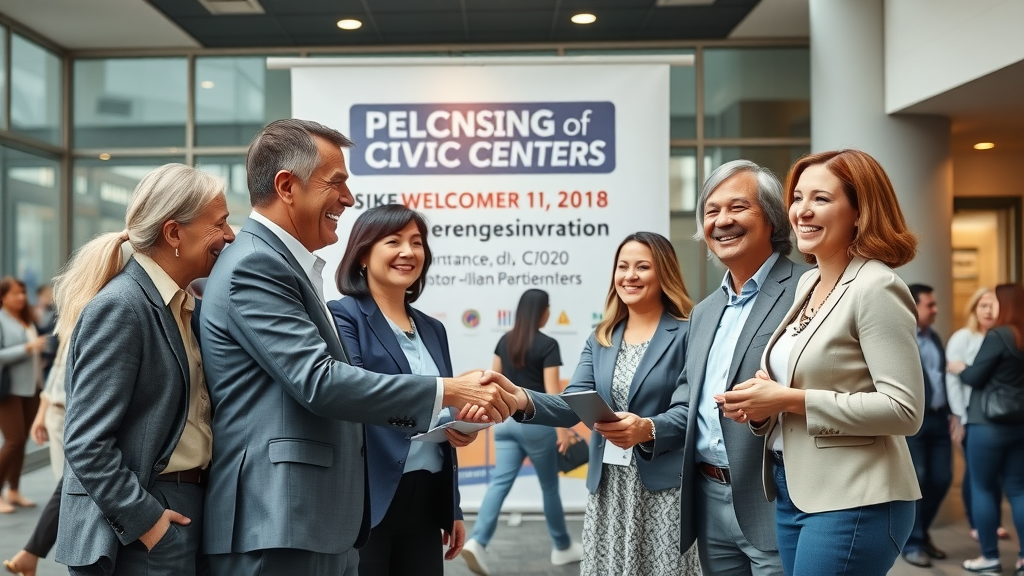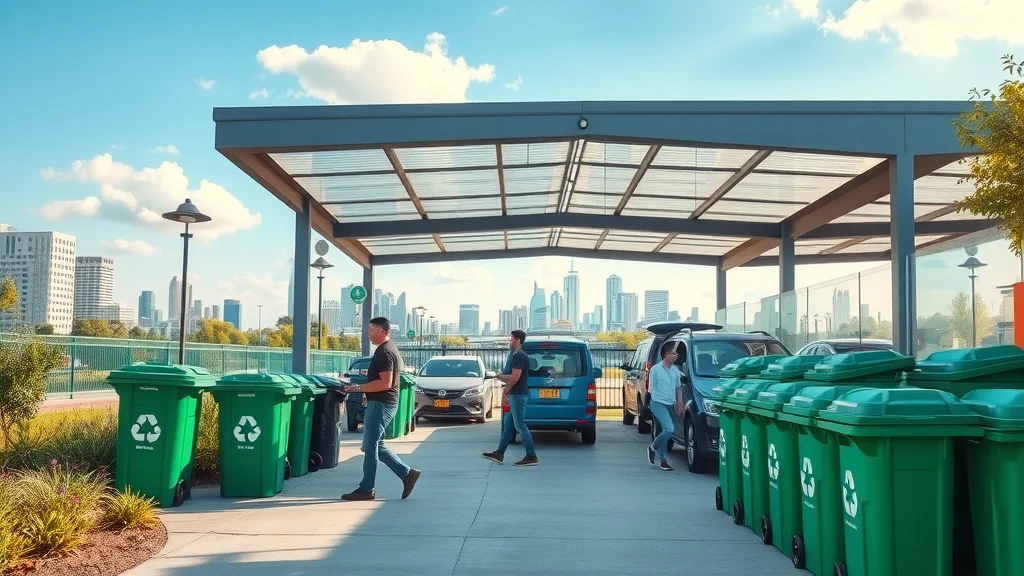Why Community Giving Events Matter in Today’s World
Every year, communities face complex challenges—economic uncertainty, gaps in critical services, and persistent needs among vulnerable populations. In this landscape, the question isn’t whether these issues exist, but how we can effectively respond. Community giving events have emerged as a crucial force for uniting people to meet local needs, rallying individual acts of generosity into a collective movement that’s much greater than the sum of its parts. Across regions, event-driven giving days like Give More 24! inspire entire neighborhoods to come together and drive meaningful contributions—creating moments when everyone’s participation counts.
But what makes these events more than just another fundraiser? The answer lies in their power to spark genuine engagement, foster deeper connections, and build a shared vision for the future. As local nonprofits, businesses, and leaders collaborate on these giving occasions, communities don’t just raise money; they redefine what it means to belong and contribute. The ripple effects of such events reach far beyond a single day or donation—they uplift entire networks, strengthen bonds, and set the stage for sustainable growth and positive change. Understanding why and how these events work is essential for anyone who dreams of making a lasting difference in their city or town.

The Power and Principles Behind Community Giving Events: Unleashing Local Generosity
At their core, community giving events are carefully organized campaigns that mobilize people, resources, and momentum for causes that matter locally. Whether called “giving days,” “charity drives,” or “impact initiatives,” their goal is to channel collective energy toward meaningful support for nonprofits and community-building organizations. These events typically occur over a set window—sometimes spanning 24 hours—and challenge everyone, from businesses to individuals, to pitch in. By creating both urgency and unity, community giving events encourage participants to become part of something larger, with every contribution reinforcing the sense that positive change is truly possible.
Importantly, the benefits of these events go beyond simple financial gains. Studies show that community giving events promote awareness of local needs, strengthen networks among organizations, and provide fresh opportunities for volunteer engagement. They also serve as a launchpad for capacity-building—helping nonprofits develop strategic partnerships, unlock new resources, and acquire skills in outreach or leadership. For anyone unfamiliar or hesitant to participate, the potential risk is missing out on the deep sense of fulfillment, belonging, and impact that comes from uniting with others for a common good. In a busy world, these moments of shared purpose are not just valuable—they’re essential to community vitality and resilience.

Why Community Giving Events Create Real-World Impact for Southwest Washington
When organizations with a mission for inclusivity and innovation direct their energy into community giving events, the results speak for themselves. One such group, widely recognized in Vancouver, Washington, has succeeded in rebooting the region’s largest giving day, known as Give More 24!, bringing together nonprofits, businesses, and individuals to maximize support for critical causes. Their approach emphasizes that giving is about more than donations—it’s a catalyst for relationships, capacity-building, and local leadership development.
The real-world impact of these gatherings is visible in the stories and outcomes they foster: collaboration between nonprofits grows, new community leaders emerge, and positive ripple effects extend to families, schools, and neighborhoods. By intentionally designing events to be both inclusive and innovative, organizations help participants experience the value of generosity firsthand—connecting their contribution to direct improvements in the lives of their neighbors. Community giving events become engines for growth, vision, and meaningful connection, multiplying benefits not only for recipients but also for those who give.
Bridging Nonprofits and Entrepreneurs—How Giving Events Foster Innovation
One of the most vital contributions made by community giving events is their unique ability to bridge diverse sectors. In regions where nonprofits and entrepreneurs are encouraged to collaborate, such as in Vancouver’s Nonprofit Collective and Junior Market initiatives, these events become laboratories for innovation. Community-driven programs like Lemonade Day empower the next generation of entrepreneurs, inspiring youth to explore social impact while local nonprofits gain new resources and allies. The outcome? A dynamic cycle where giving, learning, and growing happen hand in hand.

For business owners, participating in local giving days or related events is an opportunity not only to support worthy causes but also to connect with like-minded partners and future leaders. The mutual benefit is clear—businesses strengthen community reputation, nonprofits expand their reach, and everyone gains practical experience in collaboration, leadership, and problem-solving. In a time when every voice matters, these partnerships make community giving events essential touchpoints for anyone invested in long-term, sustainable change.
Building Capacity and Confidence: The Hidden Benefits of Giving Days
Beyond the financial contributions and visible celebrations, community giving events are powerful engines for developing essential skills and boosting confidence among participants. Courses like the Excellence for Nonprofit Leadership Program exemplify how giving events double as platforms for professional development—offering intensive, hands-on sessions that empower local leaders to elevate standards and grow their organizations. These learning opportunities don’t just benefit the individuals attending—they raise the bar for the entire community, creating a ripple effect of stronger, more effective organizations serving the public good.
By investing in both people and programs, community giving events nurture a culture of growth and continuous improvement. This collective commitment is key for Southwest Washington and regions like it, where challenges shift quickly and require adaptable, resilient responses. Participants walk away with more than event t-shirts or social media photos; they return to their daily work equipped with new tools, confidence, and a renewed sense of purpose.

Community Inspiration: Why Local Events Ignite Greater Involvement
The secret ingredient of successful community giving events is inspiration. When people witness their peers, leaders, and even youth stepping up to take action, there’s a contagious sense of possibility that motivates others to join. Whether through awards recognizing youth entrepreneurs, like the annual Lemonade Day Youth Entrepreneur of the Year, or by drawing hundreds to downtown markets celebrating innovation, these events show what’s possible when communities prioritize connection and shared vision.
Such moments redefine personal and collective identity, turning passive residents into active citizens and sparking a lifelong commitment to making a difference. The emotional impact lingers long after the event ends, reminding participants and spectators alike that lasting change requires both consistent effort and the courage to believe in local potential.
The Greater Vancouver Chamber’s Vision: Cultivating Growth, Vision, and Connectivity Through Community Events
The approach embraced by leading organizations in Vancouver, WA, draws from a philosophy rooted in growth, vision, and community. These values are evident in every initiative—from launching events like Give More 24! to collaborative programs for both nonprofits and entrepreneurs. Central to their mission is the idea that inclusive programming and innovative resources are not just goals, but necessary strategies for enabling all members of the business and nonprofit ecosystem to thrive.
This focus on community vitality is carried out through targeted support, collaborative leadership development, and a commitment to maximizing participation among all age groups and backgrounds. Working as a “hub” for capacity-building and connection, their programs are designed to make everyone feel welcome and valued while holding high professional standards. By prioritizing relationship-building alongside professional excellence, they create environments where every participant, from business owners to emerging leaders, feels empowered to contribute meaningfully.
Underpinning these efforts is a spirit of genuine warmth, approachability, and partnership, as seen in both the structure of their events and the attitudes of their leadership. The result is an ongoing cycle of connection, education, and inspiration—one that transforms how communities respond to challenge and opportunity alike.
Trust in Action: A Real Story from a Community Champion
When it comes to measuring the impact of community giving events, real feedback from those directly involved speaks volumes. The following perspective highlights the genuine success and value found by engaging in these regional initiatives:
It is easy to endorse the Greater Vancouver Chamber because of their exceptional dedication to uniting our community. What sets them apart is not just their focus on local businesses but their genuine commitment to fostering meaningful connections and opportunities for our community. One aspect I truly admire is the Greater Vancouver Chamber’s unwavering support of the nonprofit community. They go above and beyond, offering resources, networking opportunities, and advocacy for organizations that are making a difference in SW Washington. It's heartening to see the Chamber championing causes that have a positive impact here locally. The Chamber's approach is both refreshing and inclusive, ensuring everyone feels welcome and valued. Their events and programs go beyond business; building relationships, sharing knowledge, and creating a stronger, more vibrant community. What's particularly impressive is their ability to balance professionalism with genuine warmth and approachability. Every interaction with the Greater Vancouver Chamber feels like a collaborative partnership, with mutual support at the forefront. I wholeheartedly recommend the Greater Vancouver Chamber to anyone looking to be part of a community that prioritizes connection, growth, and making a difference. Their support for nonprofits, coupled with their passion for bringing people together, makes them an invaluable asset to our region.
Experiences like these validate not just the intention behind community giving events, but the real outcomes that follow—stronger support systems, a spirit of collaboration, and a renewed sense of purpose among all participants. Anyone considering involvement in such initiatives can look to these stories for affirmation that their contributions truly matter and are met with gratitude and impact.
Redefining Philanthropy: How Community Giving Events Are Shaping Local Futures
The pursuit of a thriving, resilient community demands more than sporadic charity; it requires a dedicated, inclusive approach to engagement and giving. Community giving events stand at the intersection of vision, action, and value—mobilizing groups of all kinds to unite for a greater good. With organizations contributing time, expertise, and innovation to these events, regions like Southwest Washington continue to set the standard for what’s possible when local energy is harnessed thoughtfully.
As these collective movements grow, so does their influence, rewriting what it means to be active citizens and participants in the world around us. The benefits of community giving events are both immediate—tangible support and connection—and long-term, creating a foundation for ongoing growth, vision, and unity. Their importance in shaping the character and well-being of a place simply cannot be understated.
Contact the Experts at Greater Vancouver Chamber
If you’d like to learn more about how community giving events could benefit your community, contact the team at Greater Vancouver Chamber.
📍 Address: 1111 Main St Suite 201, Vancouver, WA 98660
📞 Phone: +1 360-694-2588
🌐 Website: http://vancouverusa.com/
Greater Vancouver Chamber Location and Hours
🕒 Hours of Operation:
📅 Monday: 8:00 AM – 5:00 PM
📅 Tuesday: 8:00 AM – 5:00 PM
📅 Wednesday: 8:00 AM – 5:00 PM
📅 Thursday: 8:00 AM – 5:00 PM
📅 Friday: 8:00 AM – 5:00 PM
📅 Saturday: ❌ Closed
📅 Sunday: ❌ Closed

 Add Row
Add Row  Add
Add 




Write A Comment